by Sreegururaj Jayachander
Romance! This eternal feeling of love, lust or bondage has quite often been associated with and due to carnal motivations. This mundane thought process has been challenged by certain ancient societies like the ones that thrived in India, by creating surreal combinations of Love with and for the divine, which in the face of it seem poles apart! The history of India has produced enough hagiologists who have made this surreal marriage of love and God possible, by their communion with Himself. It is only in this land of the holiest of the holies that Love has been proclaimed as God Himself –“Anbe Sivam” – this profound statement of Saint Thirumoolar echoes even today in Tamil Nadu.
A little more than a thousand and hundred years ago, there rose a man with victory as part of his original name, Parakesari Vijayalayan, to re-lay the foundation of an empire that would establish the Golden age in the southern half of India. A Golden age in its true sense is not just about subjugations but rather the magnanimous maturity that its society mirrors in the social, economic and spiritual domains. The Cholas of South India created one such an age and sustained it for almost four hundred years!
One of the most vibrant, live and awe inspiring vestiges of the Cholan days are the innumerable temples that they dedicated to the Lord. The sheer numbers of edifices that the Cholas built are a reflection of their extraordinary passion, incessant dedication and unquenchable love for art, which they used as a medium to express their loyalty to the Ultimate, in the most sublime and expressive ways. Amidst rich paddy fields in their myriad shades of green, criss-crossed by pregnant distributaries of the perennial river and soaked in the baking heat of the tropical sun shine of the south, the Cholan heartland is strewn with beautiful gems born out of the eternal Cholan romance.
In hindsight, it seems like the temple builders loved to do back breaking and laborious jobs! They mostly chose the most difficult medium, granite. “Plastic art” as sculpting is also known is most arduous in granite. In comparison with popular and softer media like marble, sand stone or soap stone, granite is almost twice as hard. That would have meant the sculptor’s chisel would have eroded in almost the half the time as compared to others; a huge section of the temple building arena would have had to be dedicated to blacksmiths hammering and re-sharpening the eroded tools, resounding and echoing the chiseling rhythms of their counterparts.
The towering gopurams have always been a talking point among different town folk who boast about the size and grandeur of the edifice that their village or town possessed. At some point in time, the cultural richness of a town was decided by either the size of a temple complex it had or by the sheer number of temples it housed. Temples transformed from places of mere worship to burgeoning cultural centers. While we have succumbed to the waft of new age cultural vicissitudes and to the western style of skyscrapers, there used to be a time till the very recent when religious inclinations held sway and dictated that the size of buildings in a town be diminutive compared to the height of the temple tower or vimana.
While the Cholas have been popular for their towering vimanas, like the Great temple at Thanjavur or at Gangaikonda Cholapuram, their journey did start off with temples modest and elegant. The Chola temple design had a tower, the vimana, right over the sanctum sanctorum. Based on chronology, subtle differences in style and also for the sake of simplicity, scholars tend to classify Chola temples as early, middle and late. The early Chola temples, though much smaller in size, were graceful.
True to the phrase love at first sight, these temples would make the onlooker surrender to its simplicity, charm and grace. A beautiful example is the Brahmapureeswarar at Pullamangai, close to the modern day Pasupathil Koil, on the trunk road from Thanjavur to Kumbakonam. In Cholan days it was known as Tiru Alandurai Mahadevar temple, according to its inscriptions. The miniature panels at Pullamangai of just about the size of a modern day electronic tablet speak volumes about the beauty of Chola art. The thoranas (similar to the festoons hung during Indian festivals) over the niches on the external walls are yet another testimony to the sculptor’s divine skills. The Moovar Koil at Kodumbalur in Pudukottai district, is yet another gemstone in the early Chola list. All the fatigue of travel vanish the instant eyes set on the beauty of the shrine. It is worth lauding the efforts of archaeological survey of India (ASI) in resurrecting and maintaining the complex.
The next major milestone in the grandeur of temple building was demonstrated by Rajaraja the Great and his son Rajendra the Great. They expanded the empire to its greatest extents, with Rajendra pushing it upto the Malay peninsula and parts of the Indonesian archipelago. The direct and indirect Chola influences in several aspects of the culture of these islands befit yet another article!
The Brihadeeshwara temple, the magnum opus of Rajaraja, also known as the Dakshina Meru, is a paradise to the devotee, art lover and the general tourist alike. Just to give a feel for the grandeur, in comparison to the one at Pullamangai, the Great temple at Thanjavur is almost five times taller in size. It is a repository of all the sculptural and architectural elements evolved by the Cholas. While the great temple has become more popular for the myths surrounding it, including the famous shadow myth, the admirable truths get less mention.
The arresting beauty of the Chola paintings on the upper storey of the inner walls of the vimana currently inaccessible to the general public are a visual delight. For the benefit of all, photographic reproductions are housed in a museum inside the temple complex. I personally consider it a gift of the lifetime for having had an opportunity, several years ago, to witness them right there!
The assiduous record keeping capabilities of the Cholas are reflected in the lovely inscriptions all around the temple. Right from the meikeerthis (lines of praise dedicated to the emperor), to the records of the enormous endowments given by the royal family, to the minute details of the names of the 400 women assigned to the temple, and the address of the houses they lived – the information on the walls is overwhelming!
During the 11thCentury A.D, it must have been one of the tallest manmade monuments. Truly the handiwork of a megalomaniac!
Rajendra surpassed his father in several fascinating ways. Creating an entire city in itself also with a gigantic edifice both at Gangai Konda Cholapuram is the least that can be said about him. He set an insurmountable grandeur challenge for his successors!
Kulothunga I and his successors, popularly known as the Later Cholas, equipped with centuries of temple building expertise and under pressure to excel their predecessors started building huge temple complexes and temple cities. By this time Chola art had attained its maturity. The Airavateeswarar temple at Darasuram and the Kampahareswarar temple at Tribhuvanam, both near the modern day Kumbakonam, are fine expressions of later Chola art. Srirangam, Tiruvanaikka, Tiruvarur and Chidambaram are some other mammoth testimonials.
While it is humanly impossible to capture the grandeur and beauty of Chola art in a humble article like this, the eternal romance of Cholas with monumental expressions in stone, shall be remembered as long as the medium they chose to express their devotion survives on earth.
The Cholas embarked on a different romantic journey, one that increased their fame as accomplished artists & patrons of art across the globe. That story of yore could become the topic of yet another romantic sojourn!
An engineering researcher by profession, Sreegururaj is also an artist and a heritage enthusiast. He loves studying Dravidian art and architecture and has so far visited more than 60 Chola temples. He considers studying Chola temples, a “life time pursuit”!

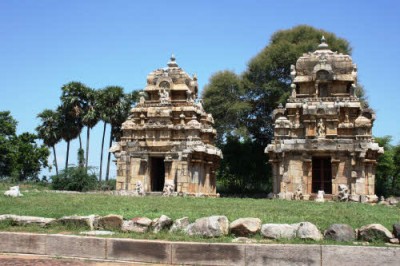
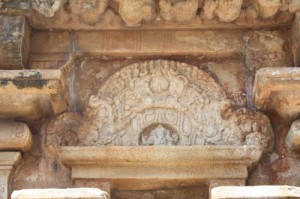
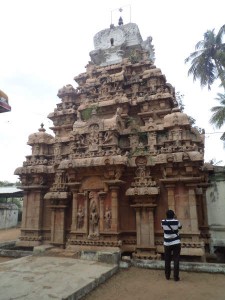
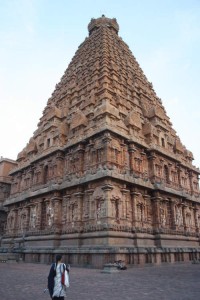
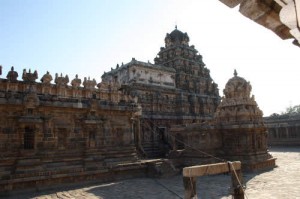




Sree Gururaj Jayachander – excellent writing. Very good style and shows the great amount of research that has gone into this. Please keep writing. Best wishes.
Dear Mr.Gurunandan, Thank you for your kind words and support.Warm regards.